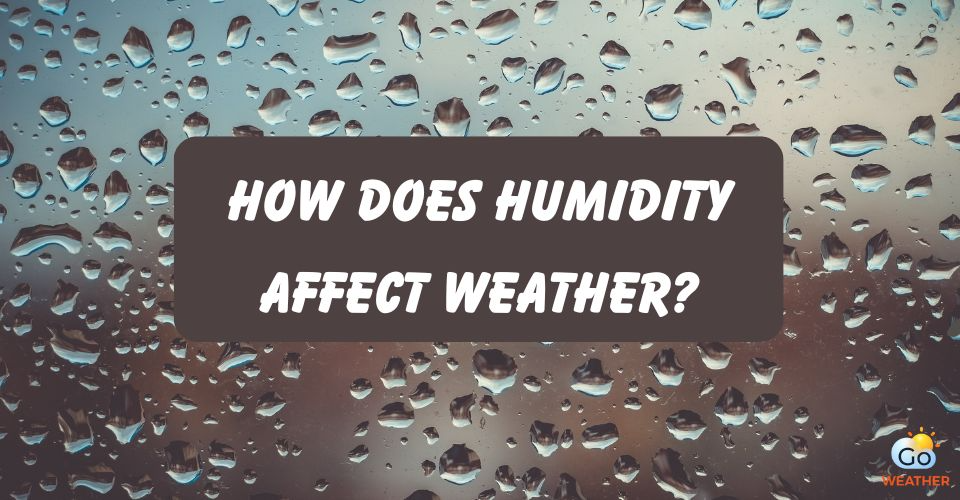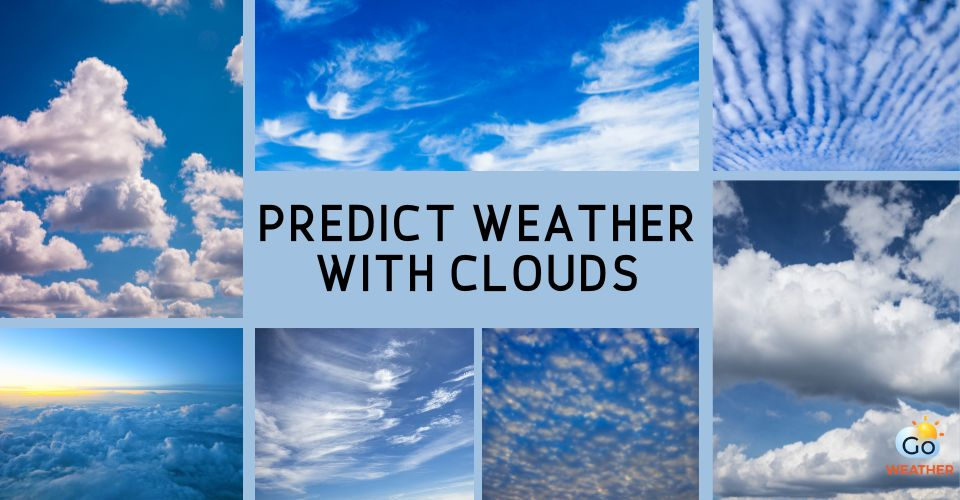El Nino Weather & Its Effects on the Weather [Fully Explained]
Nowadays, the terms El Nino weather pattern or La Nina weather effect have become familiar and have been mentioned many times on many social media. Most people think these weather effects are bad, change the climate, and cause terrible consequences to our lives. But how much do you know about it? The article will disclose the definition of El Nino weather and further information about its causes, effects, and consequences.
.jpg)
El Nino weather definition
What Is El Nino Weather?
El Nino is a warming of the ocean surface, or above-average sea surface temperatures, in the central and eastern tropical Pacific Ocean.
Low-level surface winds that ordinarily blow from east to west around the equator ("easterly winds") diminish or, in rare situations, begin to blow in the opposite direction ("westerly winds").
El Nino occurs intermittently, every two years to a decade, and no two events are precisely the same. This event can affect weather patterns in the US and worldwide.
.jpg)
Define El Nino weather
The name El Nino in Spanish means the little boy or Christ child. It was recognized for the first time in the 1600s.
The fishermen off the coast of South America realized and recorded the unusual appearance of warm water in the Pacific Ocean. The term was named after the time of year (around December) when these warm water events tended to occur.
Difference between El Nino and La Nina
The El Niño-Southern Oscillation (ENSO) climate pattern has a substantial impact on worldwide weather, with El Niño and La Niña occurring at opposing phases.
El Nino occurs when the surface waters of the central and eastern Pacific Ocean become exceptionally warm, causing changes in atmospheric circulation patterns.
This warming can result in greater rainfall in some areas, such as the western coast of the Americas, while producing droughts in others, such as Australia and Southeast Asia.
.jpg)
El Nino and La Nina
On the other hand, La Nina occurs when the same region experiences cooler-than-normal sea surface temperatures. This often has the reverse effect: drier conditions in the Americas and more severe rainfall and storms in Australia and Southeast Asia.
Overall, both phenomena impact global temperatures, hurricane activity, and precipitation patterns, frequently resulting in extreme weather occurrences throughout the planet.
What Causes El Nino Weather?
Under normal conditions, the trade wind blows from East to West and converts hot water into the Western Pacific.
Accordingly, the sea level in Indonesia is approximately 0.5 m higher than that in Ecuador. The surface temperature of the sea in the west is about 8°C higher than that in the East.
In South America, thanks to the shallow surface between the warm water above and the cold water below, the cold water can float to the surface from below.
This cold water has many nutrients that encourage the growth of primary production organisms, making marine ecosystems more diverse and increasing fish catches.
During this period, the increased rainfall occurred in the warm sea area (Western Pacific) and dropped in the East Pacific region.
.jpg)
What causes El Nino?
During the El Nino weather effects, the trade winds were weaker in the central and eastern Pacific regions. The hot water flow gradually spreads from the West Coast to the East Coast of the Pacific.
This process causes the shallow surface that separates the upper layer of hot water and the lower layer of cold water to become deeper.
After that, it inhibited the emergence of the cold water layer, making the eastern region less productive and fishy.
The rainfall also increases with the movement of hot water, causing flooding in Peru and drought in Indonesia and Australia.
.jpg)
The trade winds were weaker in the central and eastern Pacific regions
How Does El Nino Affect the Climate?
El Nino weather is like hard, wall-stopping weather conditions (strong winds) across the Gulf of Mexico, the Caribbean, and the tropical Atlantic.
With the help of the wind stopping ( wind shear), the change of wind speed/ direction with altitude can break tropical development.
When the wind shear does not occur, a tropical cyclone's center will be vertically aligned. This allows it to remain intact and to become stronger.
However, when upper-level winds are above the top of a system, the system can be tilted in one direction and have difficulties to flourish.
This phenomenon is similar to a spinning top. When it stays completely upright, it can spin continuously without a problem. Otherwise, when it is angled or tilted, a halt is a certain thing.
.jpg)
El Nino weather effects
The most notable influences from El Nino in the United States occur during the winter.
In general, El Nino tends to reach a peak during the harsh winter months. This weather phenomenon often happens in November and December, but sometimes, it can get a peak a little bit later than that.
During a typical El Nino, the storm track will move on farther south. Thus, California and the southwestern U.S. have a higher probability of precipitation and storms.
Due to the wind shear, the Southern US receives more tropical moisture, and that’s why storms occur more frequently.
On the other hand, the weather in the Northeast in an El Nino winter is often warmer, but the region can still be stormy with frequent snowstorms.
The intensive level of El Nino can also happen differently on a scale as some could be stronger or weaker than others. It is said that the strength of the lower-level winds in the central Pacific is one of the main causes of strong El Nino weather.
.jpg)
El Nino
Moreover, not all El Nino are the same, and it can interact with some other natural climate phenomena. As a result, a wide variety of seasonal influences across the globe.
In general, an El Nino pattern can be believed to last from a few months up to a year and a half. However, there are some occasions when El Nino weakens during the spring and then restrengthens in the next summer.
It's conceivable that El Nino lasts for more than a year, but typically, they last between six to eight months.
When neither an El Nino nor La Nina appear, the climate pattern is ENSO-neutral.
During a neutral stage, the weather conditions such as temperatures, surface winds, and rainfall in the tropical Pacific go to nearly their long-term average, according to NOAA.
Furthermore, it is commonly believed that El Nino weather brings negative effects and bad consequences to climate and humans. In fact, this is not true.
On the positive side, El Nino plays an important role in suppressing Atlantic hurricane activity.
.jpg)
Not every time El Nino causes negative effects
In the US, it typically brings beneficial winter precipitation to the arid Southwest, less wintry weather across the North, and a reduced risk of Florida wildfires.
El Nino’s negative impacts include damaging winter storms in California and increased storminess across the southern United States.
Some past El Nino are also factors causing severe flooding and mudslides in Central and South America, and drought in Indonesia.
.jpg)
Some past El Ninos cause severe flooding and mudslides
An El Nino event may significantly weaken ocean productivity off the west coast by limiting factors that can cause floods or nutrient circulation in the ocean.
According to a NOAA scientists report, these nutrients in the ocean are the cornerstone of various marine food nets. They could negatively impact food sources for several animals like birds, fish, and marine mammals.
► Read more: Why weather change
Consequences of the El Nino Weather
The main effects of the El Nino weather phenomenon occur in and around the tropics. Below are some of the effects of El Nino on world weather:
.jpg)
Consequences of El Nino
-
In South America, from fall through spring, there is a sharp increase in the possibility of flooding on the west coast and drought on parts of the east coast.
-
In Eastern countries like India and Indonesia, droughts occur more frequently. In general, El Nino causes a large amount of rainfall in the eastern part of the Pacific Ocean (west coast of South America) and very dry weather in the western part (India, Indonesia).
-
On the surface of the Pacific, energy is released into the atmosphere, causing a global warming phenomenon.
During the years when the El Nino phenomenon is quite active, leading to abnormal weather series.
In detail, the sun is hot, drought lasts longer, the rainy season comes late, floods are approximately or below the average for many years, storms and tropical depressions are less than average in the Sea East, etc.
On the contrary, in the years when La Nina weather effects are strongly active, the northeast monsoons are continuously active with strong intensity.
Also, the summer monsoon operates quite strongly and stably, bringing to the Southern region.
Furthermore, the average rainfall in the rainy season, as well as the number of storms and tropical depressions, is higher than the average.
Conclusion
As mentioned earlier, El Nino weather is not always bad. It also brings a positive side to the climate. For example, in the United States, it typically brings beneficial winter precipitation to the arid Southwest, less wintry weather across the North, and a reduced risk of Florida wildfires. Hope with this information, you understand more about this weather phenomenon.



![The Importance of Weather Forecast and Wind Direction [Full Guide]](https://admin.goweatherforecast.com/images/1732689783.png)
![10+ Interesting Facts About Tsunamis You Have Never Heard of [Latest]](https://admin.goweatherforecast.com/images/1732782530.png)






0 Comments
Leave a Comment
Your email address will not be published. Required fields are marked *